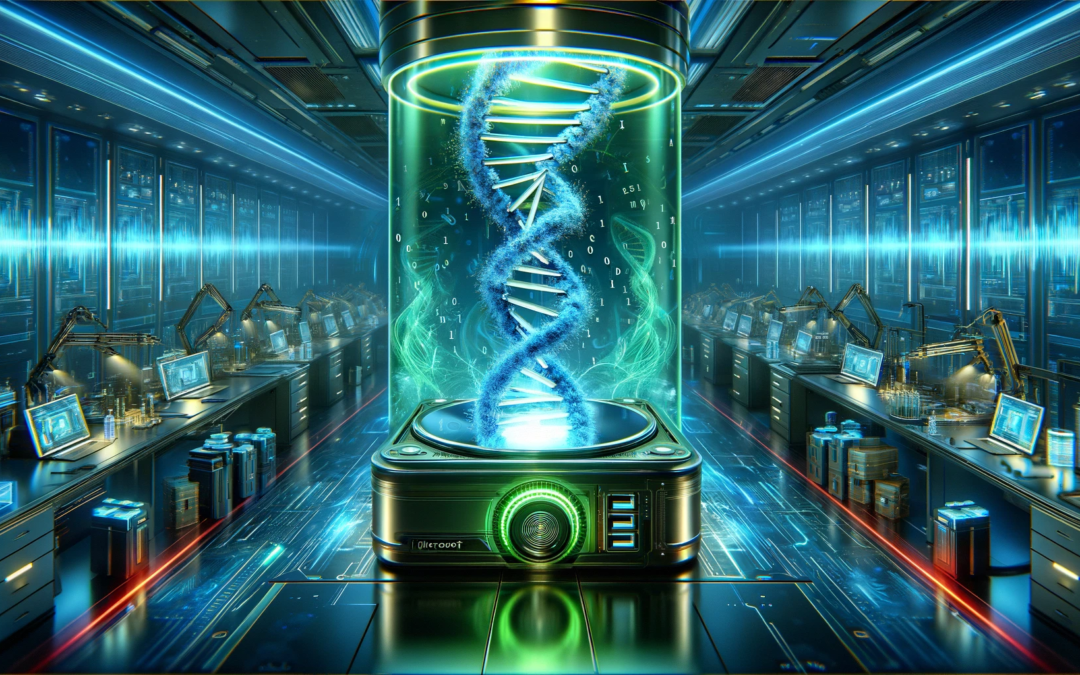In the boundless landscape of technological innovation, where the whispers of the future intertwine with the echoes of the past, we find ourselves at the brink of a revolution, one that redefines the very fabric of data storage: the Microsoft DNA hard drive. This marvel, a tapestry woven with the threads of biology and digital technology, is not merely an advancement; it’s a testament to human ingenuity and the relentless pursuit of transcending limitations.
Imagine a world where data storage is no longer confined by the physical limits of metal and silicon. In this world, the essence of life itself, DNA, becomes the medium to store our vast ocean of data. Microsoft’s foray into DNA data storage is akin to an alchemist’s dream, turning the basic building blocks of life into repositories of human knowledge and experience.
Why DNA, you might ask? The answer lies in its astonishing density and durability. A single gram of DNA can store about 215 petabytes (215 million gigabytes) of data. To put this in perspective, consider this: all the data in the world could theoretically be stored in a volume of DNA that fits in the back of a van. Furthermore, while traditional storage media degrade over time, DNA can preserve data for thousands of years, making it an ideal medium for archival purposes.
Microsoft’s journey in this domain began in earnest a few years ago, as they collaborated with researchers at the University of Washington. Together, they ventured into the realm of molecular data storage and retrieval, encoding digital information into synthetic DNA strands. The process involves translating the binary data of zeros and ones into the four nucleotide bases of DNA: adenine, guanine, cytosine, and thymine. This encoded DNA can then be synthesized and stored.
The retrieval of stored data is an equally fascinating process. The desired DNA segment is sequenced, and then sophisticated algorithms translate the nucleotide sequences back into binary code, reconstructing the original data. This seamless dance between the biological and digital realms represents a profound leap in data storage technology.
The implications of Microsoft’s DNA hard drive are staggering. In the face of exponentially growing data demands, DNA storage offers a sustainable and compact solution. Imagine data centers, currently sprawling over acres, being reduced to the size of a few refrigerators, drastically reducing the environmental footprint.
However, the path to commercial viability is strewn with challenges. The current cost of synthesizing and sequencing DNA is prohibitively high, making it a luxury far beyond the reach of everyday storage needs. Moreover, the speed of data retrieval is currently much slower compared to traditional storage media. Microsoft, in its quest, is actively researching ways to surmount these hurdles, aiming to make DNA storage a practical reality.
The potential applications of DNA data storage extend beyond mere data hoarding. It could revolutionize fields like archival science, where preserving historical documents and records for millennia could become the norm. In the realm of space exploration, DNA hard drives could store vast amounts of data in minuscule spaces, a critical factor in interstellar missions.
As we stand on the precipice of this new era, Microsoft’s DNA hard drive is not just a technical marvel; it’s a symbol of our unwavering quest to push boundaries and explore uncharted territories. It embodies a future where the lines between life and machine blur, where our data doesn’t just reside in cold, inanimate devices but is etched into the very essence of life itself.
In this symphony of science and imagination, we see the birth of a new paradigm, one where our stories, our knowledge, and our essence are carried forward through time, not just in books or on hard drives, but in the very fabric of life. The Microsoft DNA hard drive is not just a leap into the future; it’s a leap into a new dimension of human potential and legacy.










